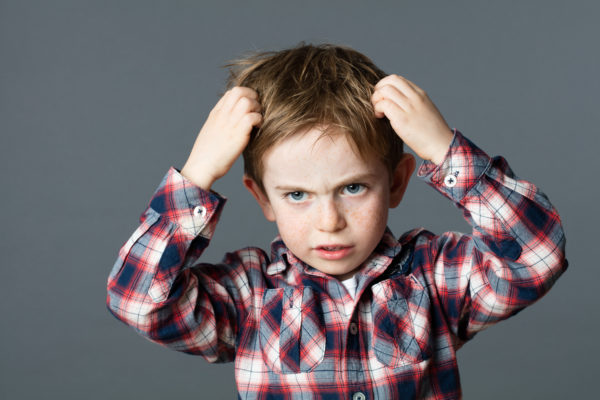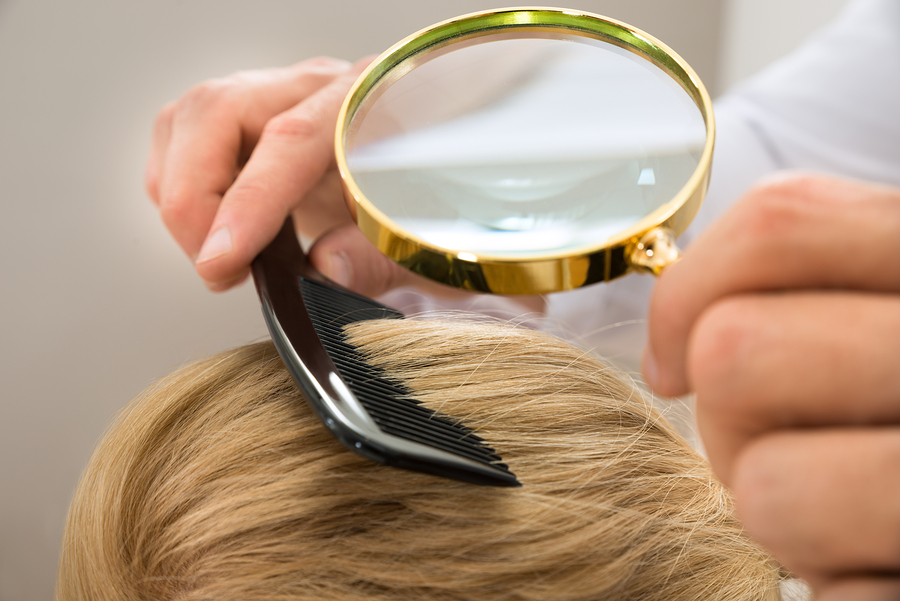READY TO GET STARTED?
REQUEST A FREE ESTIMATE
Fill out the form below or call (888) 466-7849 for a free, no-obligation estimate.

As the dog days of summer wind down, parents are preparing to send their kids back to school. While most of the emphasis and preparation of back to school is on the famous 3 Rs (“Reading, Riting, and Rithmetic”), there is another “R” that we should all be aware of: “Removal” – for the removal of head lice.
As kids return to the classroom, the threat of lice looms. In fact, head lice is the second leading cause of absenteeism in elementary school children, following closely behind the common cold. Do you know how to spot head lice? What can you do to treat it once your child has it and how can you prevent them from getting it in the first place? Check out the information below to make sure you and your child are prepared to head back to the classroom!
Head lice (Pediculus humanus capitis) can be found throughout the world. In the US it is most commonly found in school aged children and members of their households. The CDC estimates between 6 and 12 million cases each year in the United States. Lice can infest humans of any age, from infants to the elderly. Make sure to check everyone in the household if you suspect lice.
Head lice cannot fly or jump. They move by crawling. The most common method of spreading head lice is through direct contact with hair of an infested person. This type of head-to-head contact is most common during play at school, sports activities, playgrounds, slumber parties, and camp. Although extremely rare, head lice can be spread by sharing personal belongings such as hats, scarves, and coats, or by using personal items such as hair bows, brushes and combs, towels, or by lying on a pillow or couch that has been used by an infested person. Head lice is not spread by dogs, cats, or other pets. It is uncommon for lice to be spread by inanimate objects such as sports helmets or headphones because their claws are not adapted to grasping the smooth and slippery surfaces found on these items. It is also difficult for them to spread by use of wigs and hairpieces as the hair shafts on these do not have the blood supply they need for survival. Although lice have been shown to survive for several hours underwater, they are unlikely to be spread by swimming in a pool. They have been shown, however, to cling tightly to hair when submerged in water. The chlorine in pool water does not kill lice.
Head lice are found in 3 stages – the egg (or nit), the nymph, and the adult. Nits are eggs laid at the base of a hair shaft. They are very small (about the size of a knot in thread) and very hard to see. They are often yellow or white in color and can be confused for dandruff. They usually take 8-9 days to hatch. The nymph is an immature louse that has recently hatched from a nit. They look like adult lice but are much smaller. They mature into adults in 9-12 days from hatching. Adult lice are about the size of a sesame seed. They have six legs and are tan to grayish-white in color. Nymphs and adult lice must feed on blood to survive. Adults can live up to 30 days with a blood source but will die within 1 to 2 days after falling off a human head.
Lice and nits are almost exclusively found on the scalp, especially around the ears and at the neckline. They can be found in eyelashes and eyebrows but this is very uncommon. Signs and symptoms of head lice include a sensation of something moving in the hair or on the scalp, itching, scratching, irritability, difficulty sleeping, and sores on the head from scratching. Lice are most active in August and September and at night.
Treatment is recommended for anyone with an active infestation. You can check for lice at home, although they are often hard to find and see. You can have your child checked by a medical professional, school nurse, or your local health department, as well. Because they avoid light, are very small, and very quick, it is often helpful to use a magnifying glass and a fine-toothed comb to check your child’s head. If you do find an active infestation in your household, everyone in the household should be treated at the same time.
The optimal time to treat is after nits have hatched but before new eggs have been laid. Because this is nearly impossible to determine, retreatment is often necessary. There are both over-the-counter and prescription strength medications available for treatment. Always follow the instructions on the medication box. It is also important to not re-wash hair 1-2 days after the initial treatment. The infested persons should also put on clean clothes after the treatment. Recheck the scalp 8-12 hours after the initial treatment and comb out any remaining live lice. If there are no dead lice 8-12 hours after initial treatment you may need a different medication. It is recommended that you speak to your health care provider to discuss prescription strength treatments. Continue to check and comb the hair every 2-3 days following the initial treatment for 2-3 weeks. This helps prevent reinfestation. Retreatment may be necessary and you should follow the directions on your medication package regarding the frequency and necessity of additional treatments.
Supplemental measures must also be taken in addition to medicinal treatments. These are particularly useful in preventing reinfestation. Machine wash and dry (or dry clean) any clothing, bedding, and other items worn or used by the infested person 2 days prior to the treatment. Another option is to seal all of these items in a plastic bag and store for 2 weeks. Soak combs and brushes in hot water for 5-10 minutes. Vacuum the floor and furniture, particularly where the infested person sat or lay.
Head lice are not known to spread any disease and are not considered a public health hazard by the CDC. For this reason, most health departments do not require reporting of head lice infestations. School policies are established by local school boards. Many schools are relaxing their previous “no-nit” policies which required students to remain out of school until all evidence of nits were eliminated. Many school districts are trending away from this policy and only requiring children to remain out of school if live lice are present. Check with your child’s school to verify their policy.
Head lice are most commonly spread by direct head-to-head contact. While the chance of spreading lice by sharing items is rare, it does occasionally occur. With that in mind, you can follow these 7 steps to help prevent head lice infestations in your family:

6 to 12 million children get lice each year in the U.S., according to a recent article by CNN. While this may not be news to you as a parent, what is surprising is that lice are getting harder to kill and get rid of. CNN is calling it “mutant lice”, resistant to common, over-the-counter chemical treatments used to treat lice.
According to the American Academy of Pediatrics, the first step to getting rid of lice is to use a treatment like Nix or Rid that you can find at your local drugstore. They’re easy to use and affordable, and until now, pretty effective and reliable when used correctly.
The problem: scientists are discovering that lice are beginning to become tolerant to these over-the-counter medications by gene mutation. The American Academy of Pediatrics assures us that while this isn’t a huge issue right now, it can be in the future.
So what should you be doing at home to prevent and control lice? Check your kids’ head and hair frequently, especially during the school season, and be on the lookout for frequent itching. Finding it early can reduce the chances of lice spreading to other family members or other children at school. If you find lice, use an over-the-counter treatment immediately and be sure to follow the directions. Also, it’s important to check everyone else in your home for lice (including you). Wash any clothing or bedding that the lice could have come in contact with. To prevent lice, don’t allow your children to share hats or hair brushes with other children. And if prevention and at-home treatments don’t work, contact your pediatrician.
Read the full CNN article here.

6 to 12 million children get lice each year in the U.S., according to a recent article by CNN. While this may not be news to you as a parent, what is surprising is that lice are getting harder to kill and get rid of. CNN is calling it “mutant lice”, resistant to common, over-the-counter chemical treatments used to treat lice.
According to the American Academy of Pediatrics, the first step to getting rid of lice is to use a treatment like Nix or Rid that you can find at your local drugstore. They’re easy to use and affordable, and until now, pretty effective and reliable when used correctly.
The problem: scientists are discovering that lice are beginning to become tolerant to these over-the-counter medications by gene mutation. The American Academy of Pediatrics assures us that while this isn’t a huge issue right now, it can be in the future.
So what should you be doing at home to prevent and control lice? Check your kids’ head and hair frequently, especially during the school season, and be on the lookout for frequent itching. Finding it early can reduce the chances of lice spreading to other family members or other children at school. If you find lice, use an over-the-counter treatment immediately and be sure to follow the directions. Also, it’s important to check everyone else in your home for lice (including you). Wash any clothing or bedding that the lice could have come in contact with. To prevent lice, don’t allow your children to share hats or hair brushes with other children. And if prevention and at-home treatments don’t work, contact your pediatrician.
Read the full CNN article here.